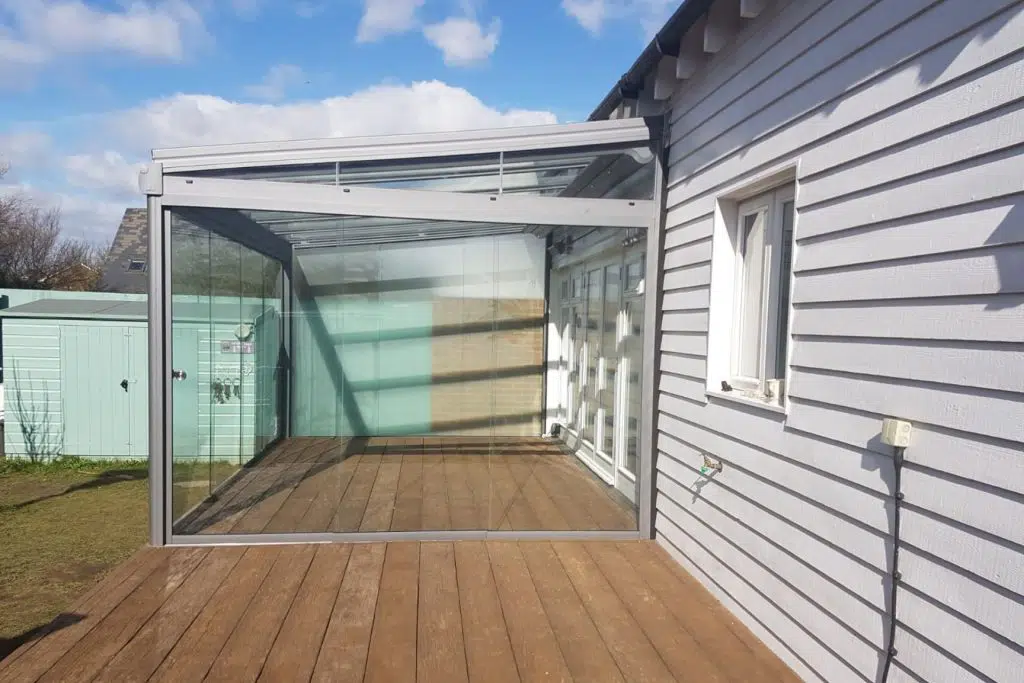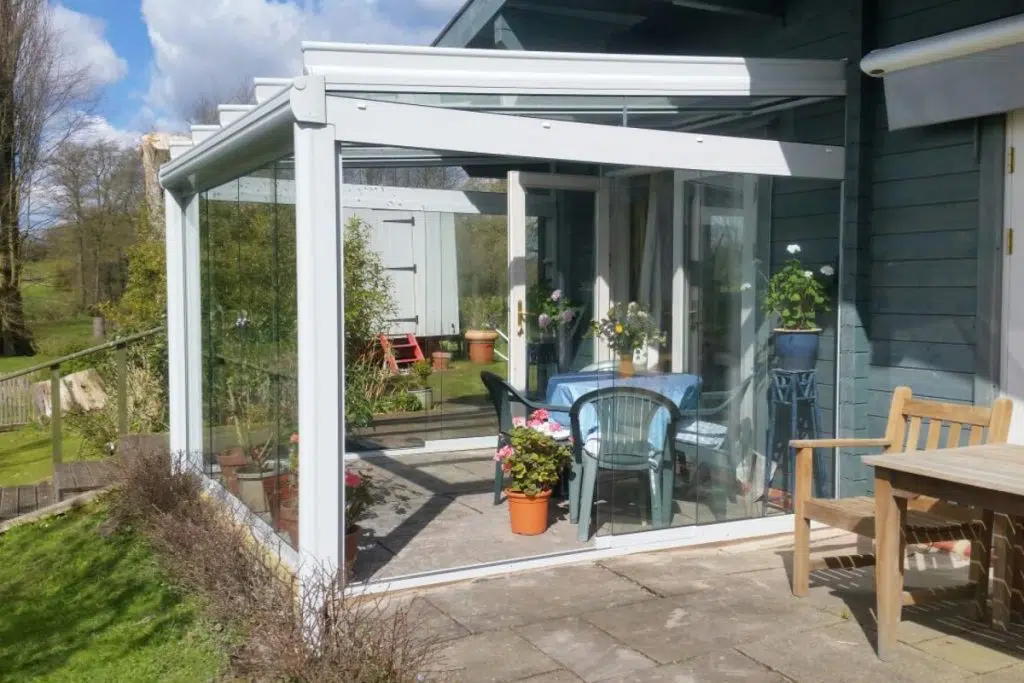What is Tempered Glass?
Tempered glass is a type of safety glass often used in applications where regular glass could pose a danger. It is created by heating regular glass to its softening point and cooling it rapidly. This process creates a surface tension that makes the glass much stronger than it would be otherwise.
Tempered glass is often used in car windshields, shower doors, and other applications that might be subject to impact or shattering. If tempered glass does break, it breaks into small, safe pieces rather than large, dangerous shards.

The History of Tempered Glass
Invented in the early 20th century, tempered glass is a type of safety glass created by heating and cooling annealed glass. The tempering process strengthens the glass by creating compressive stresses on the surface and tensile stresses on the interior.
This makes tempered glass much more resistant to breakage than normal annealed glass. If tempered glass does break, it shatters into small, relatively harmless pieces rather than large shards.
French chemist Edouard Benedictus first invented tempered glass in 1903. Benedictus was working in his laboratory when he accidentally dropped a bottle of liquid nitrogen. The bottle shattered, but the pieces were held together by the celluloid film that lined the bottle. Benedictus realized that this same principle could be applied to glass.
How is Tempered Glass Made?
The manufacturing process of tempered glass begins with the creation of annealed float glass. Float glass is made by floating molten glass on top of a bed of molten metal, which allows it to cool evenly and creates a smooth surface. Once the float glass has cooled, it is cut into the desired size and shape.
The next step is to heat the float glass to its tempering point, around 1200 degrees Fahrenheit. Once the float glass has reached this temperature, it is rapidly cooled using forced air drafts or water sprays. This sudden cooling creates internal stresses within the glass that make it up to four times stronger than regular annealed float glass.
If you have ever seen a piece of tempered glass that has been broken, you may have noticed that it breaks into tiny, harmless fragments rather than large shards. This is because the internal stresses created during the tempering process cause the glass to break into smaller pieces if it is subjected to enough force.
Glass Verandas
The Benefits of Tempered Glass
There are a number of benefits to using tempered glass, including:
- Increased Strength: Tempered glass is up to four times stronger than regular glass, making it less likely to break.
- Safety: If tempered glass does break, it breaks into small, safe pieces rather than large, sharp shards. This makes it ideal for safety applications, such as shower doors and car windshields.
- Thermal Resistance: Tempered glass can withstand higher temperatures than regular glass, making it ideal for saunas and outdoor furniture use.
- Scratch Resistance: The surface of tempered glass is harder than regular glass, making it more resistant to scratches and other types of damage.
The Uses of Tempered Glass
There are several different uses for tempered glass. One common use is in car windshields. All windshields in the United States must be made from tempered glass according to federal safety standards. Tempered glass is also often used in doors, shower doors, and other areas with a risk of breakage.
Another common use for tempered glass is in furniture. Tempered glass table tops are popular because they are strong and durable. They can also be used in various styles of furniture, including modern and contemporary pieces.
Tempered glass can also be used for decorative purposes. Decorative tempered glass is often used in lamps, vases, and other home decor items. It can also be used to create unique art pieces.

The Advantages of Using Tempered Glass in a Glass Veranda
Tempered glass is often the best option when choosing the right type of glass for a glass veranda. Tempered glass is much stronger than regular glass, making it less likely to break or shatter. In addition, tempered glass is also heat resistant, meaning it can withstand high temperatures without cracking.
There are several other advantages to using tempered glass in a glass veranda. For one, tempered glass is much easier to clean than regular glass. It is also less likely to scratch or chip, making it a good choice for areas with a lot of foot traffic. Finally, tempered glass is also more resistant to UV rays, making it a good choice for verandas exposed to direct sunlight.
Interested & want to know more?
The Disadvantages of Using Tempered Glass in a Glass Veranda
One of the main disadvantages of using tempered glass in a glass veranda is that it is more expensive than regular glass. Tempered glass has a slightly different appearance than standard glass, with a slight green tint. This can be distracting and may not match the aesthetic of the veranda.
Another disadvantage of using tempered glass in a veranda is that it can be more challenging to clean than regular glass. Tempered glass is more likely to show fingerprints and smudges, and removing these marks can be challenging without damaging the glass’s surface.
Overall, tempered glass has some advantages and disadvantages that should be considered before using it in a veranda. While tempered glass is stronger and safer than regular glass, it is also more expensive and difficult to clean.
How to Choose the Right Type of Tempered Glass for Your Glass Veranda
When choosing the right type of tempered glass for your glass veranda, there are a few things you need to consider. The first is the climate you live in. If you live in an area with extreme weather conditions, you must choose a type of glass that can withstand those conditions. The second thing you need to consider is the size of your veranda. You must ensure that the glass you choose is big enough to cover the entire area. Finally, you need to think about the style of your veranda. You want to select a type of glass that will complement the overall look of your home.
Related Links
- Veranda Construction
- Veranda Structure
- House Wall
- Veranda Protection From Weather
- Aluminium Framing Veranda
- Window Definition
- Extra Space With a Veranda
- Poly Carbonate
- Garden Design Definition
- Garden Canopy
- Glazing Defition
- Tempered Glass Definition
- Protection From Windy Weather
- Protection From Snow
- Protection From Rain
- Meterology Definition
Tips for Maintaining Your Tempered Glass Veranda
Assuming you have a glass veranda installed in your home, it is essential to take care of it to ensure its longevity. Here are some tips on how you can do that:
- Keep it clean – This might seem like a no-brainer, but it is vital to keep the glass clean on the inside and outside. Not only will this help it look good, but it will also prevent dirt and grime from building up and making the glass harder to clean. Use a soft cloth or sponge and mild soap to avoid scratching the surface.
- Check for damage regularly – It is essential to check your veranda for any signs of wear, such as cracks or chips, regularly. If you spot any damage, it is best to repair it as soon as possible to avoid further damage and deterioration.
- Be careful when using chemicals – Avoid harsh chemicals or abrasive materials when cleaning your veranda, as these can damage the glass. Stick to mild soaps and soft clothes instead.
- Protect it from the weather elements – If you live in an area with extreme weather conditions, such as high winds or heavy snowfall, it is essential to protect your veranda from these conditions. This might include installing windbreaks or snow guards around the perimeter of the veranda.



